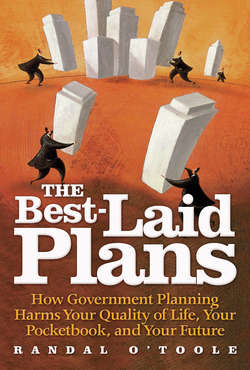Читать книгу The Best-Laid Plans - Randal O'Toole - Страница 13
На сайте Литреса книга снята с продажи.
Roadless Areas
ОглавлениеNational forests tended to sell the most valuable timber first, meaning species of trees that had the highest value or that could be reached at the lowest cost. By 1970, national forest areas that were still roadless tended to include mainly less valuable species or be the most expensive to access due to steep slopes, poor soils, or other problems.
Thanks to the cross-subsidies encouraged by the K-V fund, negative timber values presented no problem for the Forest Service. One leading forest planner in California joked about “helicopter lodgepole” sales, because helicopter logging was the most expensive way of removing trees from remote or sensitive areas and lodgepole pine was the least valuable softwood tree in the West. Yet it was no joke: many national forests did have sales with helicopter lodgepole areas, most of which were cross-subsidized by valuable timber in some other part of the same sale.
Wilderness was probably the most valuable use of many roadless areas, if only because timber and other resources in those areas cost more to remove than the resources were worth. Moreover, Forest Service studies of recreation values consistently found that recreationists placed the highest value on wilderness recreation because of the solitude that it provided. But Congress did not allow the Forest Service to charge for most recreation, so wilderness added little to Forest Service budgets. The budgetary process encouraged forest managers to dedicate these areas for timber, even though those areas would cost taxpayers, because they could use them to boost their own budgets.
